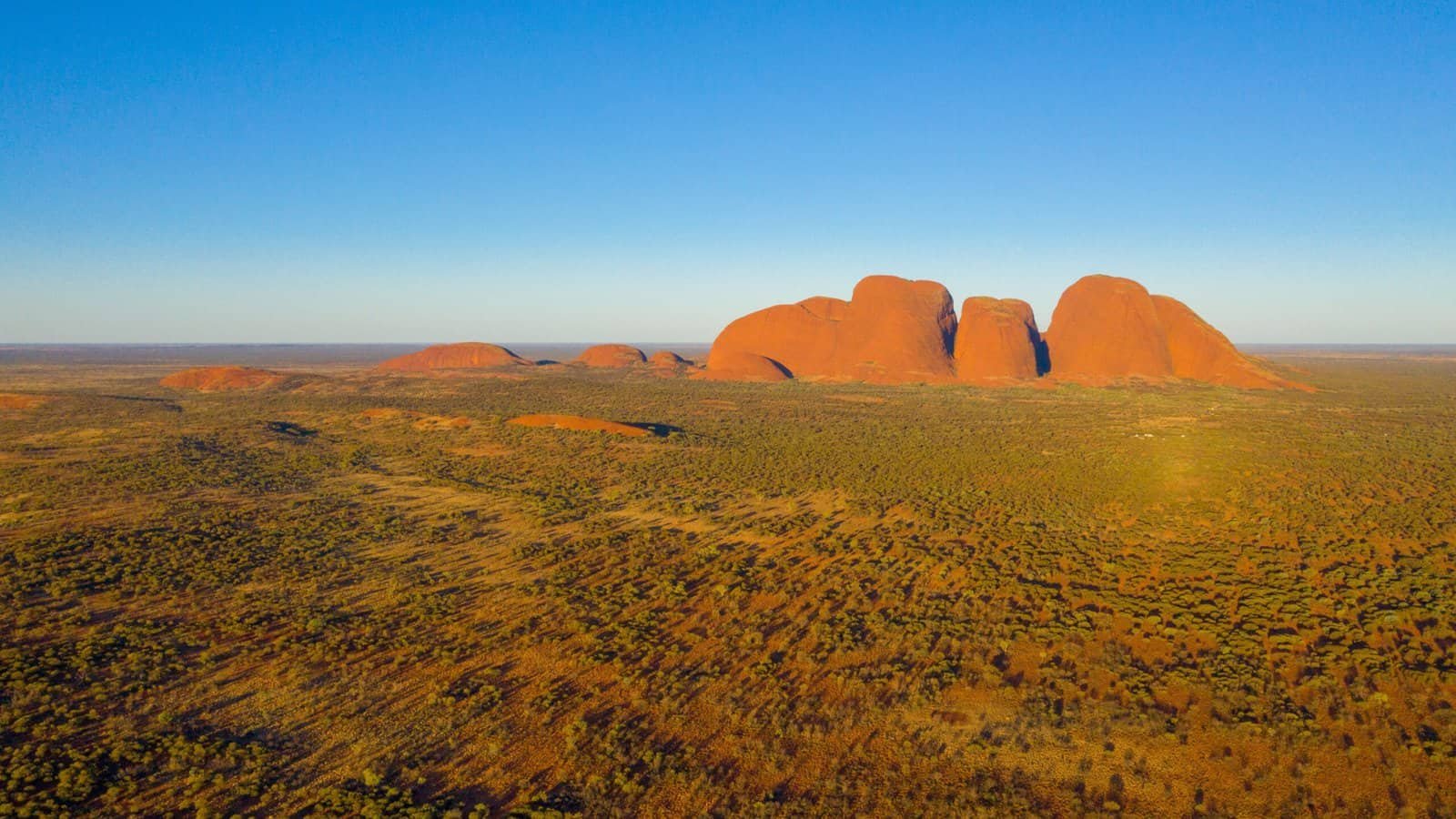Introduction
Kata Tjuta, also known as The Olgas, is a stunning natural landmark situated in the heart of Australia’s Red Centre. This sacred site holds immense cultural importance for the local Aboriginal Anangu people, with a history spanning over 22,000 years. The towering rock formations of Kata Tjuta are particularly captivating at sunrise and sunset, when they display a spectrum of changing colors.
History
Kata Tjuta holds profound spiritual significance for the Anangu people. The name “”Kata Tjuta”” translates to “”many heads,”” aptly describing the numerous rock domes that form this geological wonder. The area was first observed by non-Aboriginal explorer Ernest Giles in 1872, who named the tallest peak Mount Olga in honor of Queen Olga of Württemberg. In 1993, the dual names were officially recognized, with Kata Tjuta being the preferred name.
How to Get There
To reach Kata Tjuta, travel to the Northern Territory in Australia. The nearest major town is Yulara, located approximately 40 kilometers from Uluru (Ayers Rock). From Yulara, you can take a shuttle or drive to the entrance of the Uluru-Kata Tjuta National Park. Scenic flights from nearby airports also offer breathtaking views of the region.
Attractions
- Valley of the Winds Walk: This 7.4km circuit takes you between the domes, through creek beds, and away from the crowds. It’s a moderately challenging trail that offers stunning views and is a must-visit for any traveler.
- Walpa Gorge Walk: A shorter and easier 2.6km return walk, ideal for those seeking a less demanding experience. The trail passes through rare plants and leads to a grove of spearwood.
- Kata Tjuta Dune Viewing Area: A short, easy wheelchair-accessible walk providing panoramic views of the Olgas. It’s a perfect spot to watch the sunrise.
- Uluṟu-Kata Tjuṯa Cultural Centre: Discover the spiritual importance of Kata Tjuṯa to its traditional owners and learn how the land provided them with food, fuel, weapons, and medicines.
- Mount Conner Lookout: Located 156km from Kata Tjuṯa, this lookout offers a spectacular view of a flat-topped sandstone mountain.
Ticket Information
Visitors must purchase a Visitor Pass at the entrance of the Uluru-Kata Tjuṯa National Park. The pass grants access to all attractions within the park. It’s advisable to book your pass in advance during peak seasons.
Tips for Visiting
- Timing: Begin your walks early in the morning or late in the afternoon to avoid the intense desert heat. Some trails may close by 9-10 AM during the hottest months.
- Hydration: Carry plenty of water as the desert climate can be harsh.
- Comfortable Shoes: Wear suitable shoes for walking on rocky terrain.
- Respect Local Culture: Be mindful of Anangu traditions and adhere to any restrictions or guidelines provided by park authorities.
- Scenic Flights: Consider a scenic flight for a unique perspective on Kata Tjuṯa and its surroundings.
By following these tips and exploring the various attractions, you’ll be able to fully appreciate the natural and cultural beauty of Kata Tjuta (The Olgas).
 Rate it or leave a comment!
Rate it or leave a comment!
New Report
Close
Sign Up for FREE!
Take advantage of all the features by signing up. It's completely FREE and we never spam you!
• Create Travel Plans/Trips
• Collect Places You've Been
• Connect with Like-Minded Travelers
• Contribute to the Community by Posting New Recommendations
Already Registered? Login.





